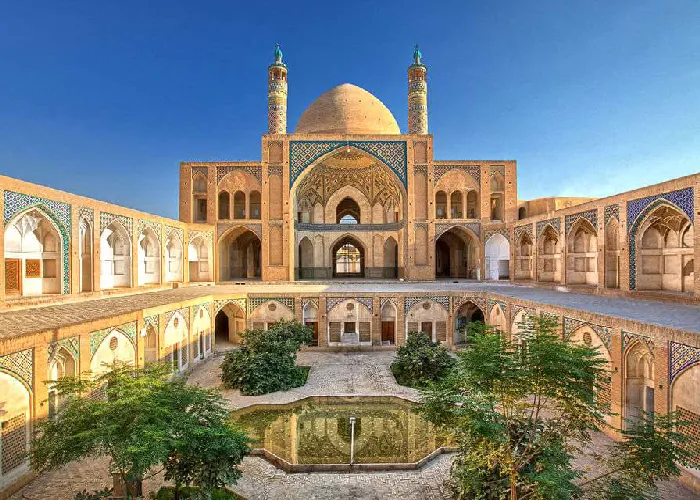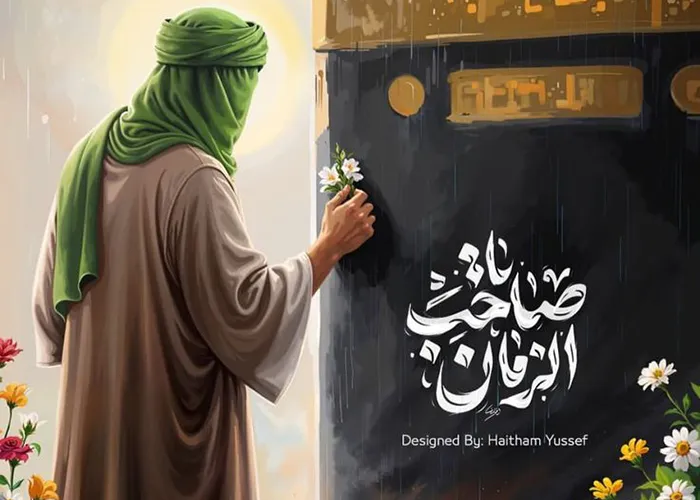Topic of the Week – Volume02 Issue29
“Jāmi‘al-Sa‘ādāt”: A Masterpiece in the Architecture of Islamic Ethics
Seyed Hashem Moosavi
Introduction
In the coming week, we commemorate the memory of the eminent jurist, philosopher, and renowned ethicist, the late Mulla Muhammad Mahdi al-Naraqi (d. 1209 AH / 1794 CE). This towering figure of the 12th century Hijri was not only a Master of Jurisprudence, philosophy, and mysticism but also made a monumental contribution to Islamic ethics through his celebrated work Jāmi‘ al-Sa‘ādāt (“The Compendium of Felicities”). This work is a unique masterpiece in the architecture of Islamic moral philosophy. Through the integration of reason, revelation, and ethical experience, it lays out a clear path for spiritual purification and the attainment of true felicity.
On the anniversary of this peerless moral scholar’s passing, this article explores the distinctive features, methodology, and enduring significance of Jāmi‘al-Sa‘ādāt. We hope it serves as a small step toward deeper appreciation of al-Naraqi’s legacy and a guide to drawing from his profound ethical teachings.
Significance and Impact
Jāmi‘al-Sa‘ādāt stands as one of the most influential works in the realm of Islamic ethics, particularly within Shi’a tradition. It is among the most systematized ethical treatises in Shi’ism, grounding moral instruction on a rational, philosophical foundation integrated with core religious principles. Al-Naraqi not only offers a comprehensive discourse on ethical concepts and their practical application but also distinguishes his work from others through its methodological clarity and coherent structure.
This magnum opus is the culmination of al-Naraqi’s profound intellectual engagement with practical philosophy, speculative theology, and mystical insight. In contrast to many earlier ethical texts that rely predominantly on traditions and exhortations, Jāmi‘al-Sa‘ādāt delves into the psychological roots of moral vices and virtues, offering both rational analysis and practical methods for self-purification and human flourishing.
Prior to this, influential works such as al-Ghazālī’s Iḥyāʾ ‘Ulūm al-Dīn and Fayḍ Kāshānī’s Mahajjat al-Bayḍāʾ had provided significant ethical discussions, largely relying on narrations and mystical traditions. Al-Naraqi, however, infused a deeper analytical and philosophical depth into ethics, drawing from both Peripatetic philosophy and Mullā Ṣadrā’s transcendent theosophy. He takes a systemic approach, focusing on the tripartite faculties of the soul-rational (ʿāqila), irascible (ghaḍabiyya), and concupiscent (shahwiyya)-and posits that human felicity depends on the balance and harmony among these faculties.
More than just a guide for personal refinement, this work stands as a theoretical contribution to moral philosophy. Its impact is clearly seen in the works of later scholars, especially his son, Mulla Ahmad al-Naraqi, whose Mi‘rāj al-Saʿāda (“The Ascension of Felicity”) expanded and disseminated his father’s insights. To this day, Jāmi‘al-Sa‘ādāt remains a foundational text studied and taught in seminaries and academic circles alike.
Al-Naraqi’s Ethical Methodology in Jāmi‘al-Sa‘ādāt
Islamic ethics before al-Naraqi generally followed two dominant currents:
- Mystical-spiritual tradition (e.g., al-Ghazālī, Fayḍ Kāshānī)
- Philosophical-rational tradition (e.g., Ibn Miskawayh, Khwāja Nasīr al-Dīn Ṭūsī)
Al-Naraqi presents a synthesis of these two traditions, but with a unique emphasis on Qur’anic foundations, Shi‘a hadith, and rigorous categorization.
Key features of his methodology include:
- Integration of Reason, Revelation, and Ethical Experience
While appreciating mystical and traditional sources, al-Naraqi employs philosophical analysis and psychological insight. For example, in discussing traits like envy or arrogance, he combines rational diagnostics, behavioral strategies, and scriptural proofs.
- Use of Philosophical Categorization of Soul Faculties
Drawing from earlier thinkers like Khwāja Ṭūsī and Ibn Miskawayh, al-Naraqi maintains the classification of faculties but roots his ethical framework more explicitly in Islamic teachings. He not only analyzes the nature of each faculty but offers practical means to moderate them.
- Gradual Ethical Reform and Universal Accessibility
Unlike some mystical traditions that target elite spiritual seekers, al-Naraqi addresses the general believer. His approach is practical and inclusive, making self-purification a tangible goal for all.
- Scholarly Critique with Academic Decorum
While critiquing earlier views (e.g., some of al-Ghazālī’s ideas), he does so with scholarly restraint. In his introduction, he explicitly states his intention to build upon and refine earlier works, not to discredit them.
- Systematic Structure: The Architecture of Moral Development
One of Jāmi‘ al-Sa‘ādāt‘s most remarkable features is its logical and organized structure. Al-Naraqi lays out a step-by-step plan for moral refinement and felicity. Unlike the more scattered, sermonic style of works like Mahajjat al-Bayḍāʾ, al-Naraqi’s treatise is rigorously ordered, analytical, and pedagogically effective.
The Structure of Jāmi‘ al-Sa‘ādāt
Al-Naraqi divides his book into three main parts, representing a coherent blueprint for moral development:
1. Preliminaries, including:
- Knowledge of the soul and its three primary faculties: rational, irascible, and appetitive
- The concepts of felicity and wretchedness and the paths leading to each
- Methods for moral training and treating inner diseases
2. Main Goals (Maqāṣid), organized according to the four cardinal virtues:
- Wisdom (ḥikmah) and the rational faculty: virtues such as knowledge and insight; vices like ignorance and doubt
- Courage (shajā‘ah) and the irascible faculty: virtues such as bravery and forbearance; vices like cowardice and rashness
- Temperance (ʿiffah) and the appetitive faculty: virtues like modesty and generosity; vices like greed, lust, and wastefulness
- Justice (ʿadālah) as the harmonization of all faculties: personal and societal justice as a culmination of inner balance
3. Conclusion, discussing advanced topics in ethical practice and spiritual development, including love of God, longing for divine union, mystical states (e.g., trust, contentment, surrender), and social ethics.
This systematic structure reflects al-Naraqi’s analytical mind and his ability to make intricate moral issues accessible. He succeeds in crafting an Islamic moral system that is both philosophically rich and practically applicable.
Key Differences from Mahajjat al-Bayḍāʾ and Iḥyāʾ ‘Ulūm al-Dīn
To better understand al-Naraqi’s unique contribution, a brief comparison is helpful:
| Category | Mahajjat al-Bayḍāʾ (Fayḍ Kāshānī) / Iḥyāʾ (al-Ghazālī) | Jāmi‘al-Sa‘ādāt (al-Naraqi) |
| Sources | Prophetic traditions, mystical experiences | Shi‘a hadith, philosophical reasoning |
| Audience | Mystics and spiritual elites | General believers, students, scholars |
| Style | Sermonic, devotional, less analytical | Structured, logical, classified |
| Final Goal | Mystical proximity to God | Moral purification for worldly and eternal felicity |
| Psychological Analysis | Limited reference to soul faculties | Deep analysis and practical correction |
Example: The Vice of Hypocrisy (Riyāʾ)
- In Mahajjat al-Bayḍāʾ, hypocrisy is addressed with moral exhortations, warnings, and traditions.
- In Jāmi‘al-Sa‘ādāt, it is defined, categorized, psychologically analysed, and accompanied by a step-by-step treatment plan.
Conclusion
Mulla Muhammad Mahdi al-Naraqi’s Jāmi‘al-Sa‘ādāt is more than an ethical manual; it is a comprehensive system for individual and societal wellbeing. With a unique synthesis of reason and revelation, and drawing from both mystical and philosophical traditions, he designed a moral framework accessible to all believers.
On the anniversary of this great scholar’s passing, revisiting his works-especially Jāmi‘al-Sa‘ādāt-offers a timely return to the core of Islamic ethics. The book remains a radiant lamp lighting the path to spiritual growth, reminding us that Islamic morality is not merely a set of recommendations, but a well-grounded, actionable system rooted in intellect, tradition, and lived experience.
May we, by engaging with this invaluable legacy, take meaningful steps toward personal refinement and building an ethically conscious society-thus keeping alive the name and teachings of this master of ethics through our actions.
editor's pick
news via inbox
Subscribe to the newsletter.




